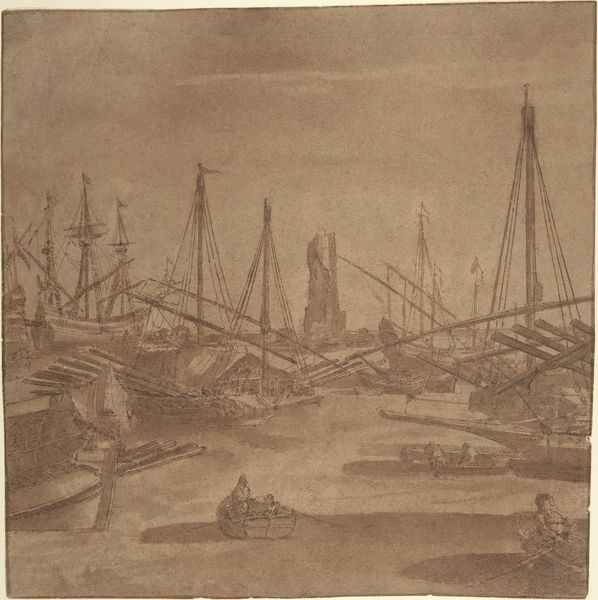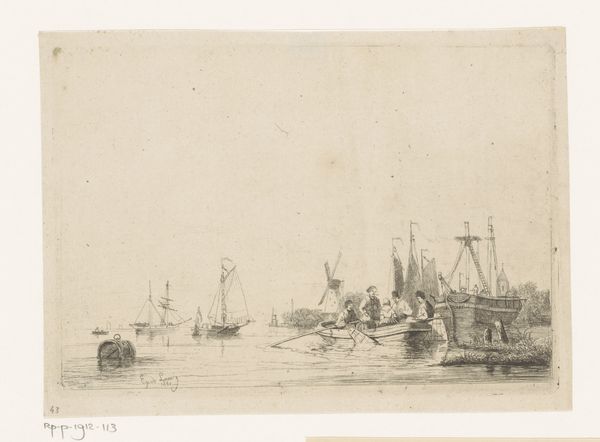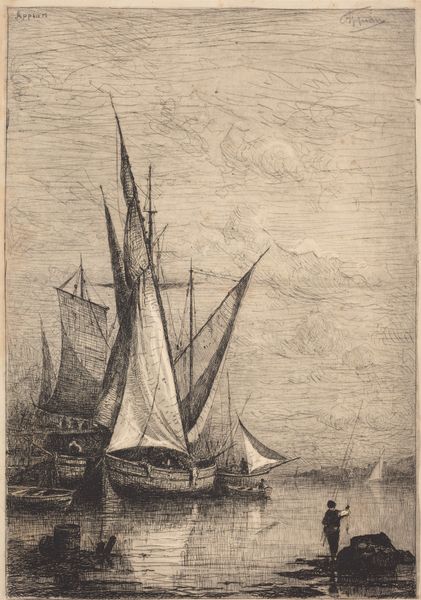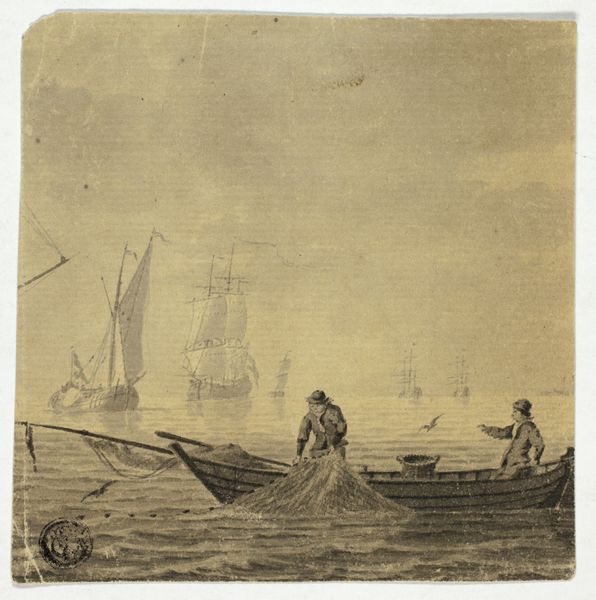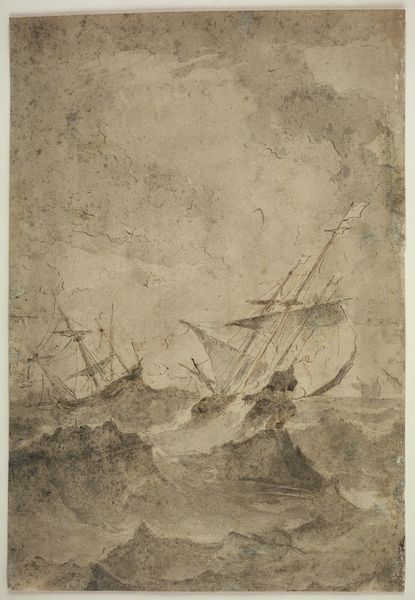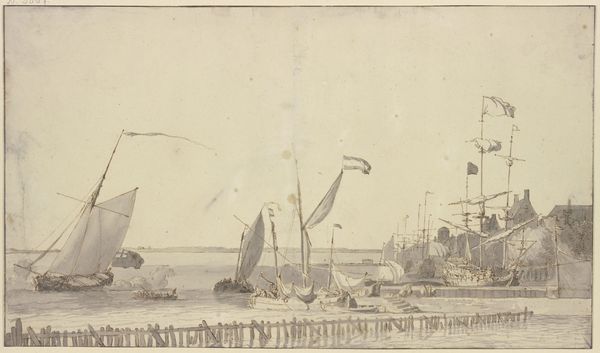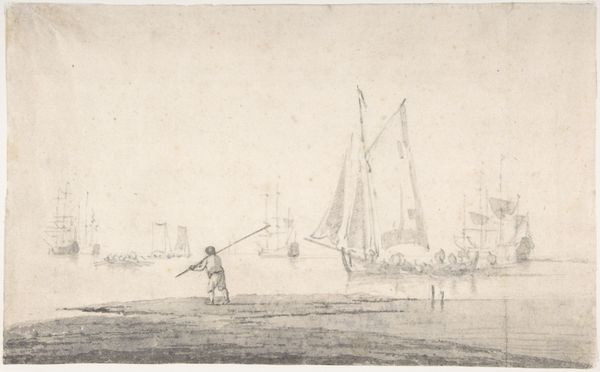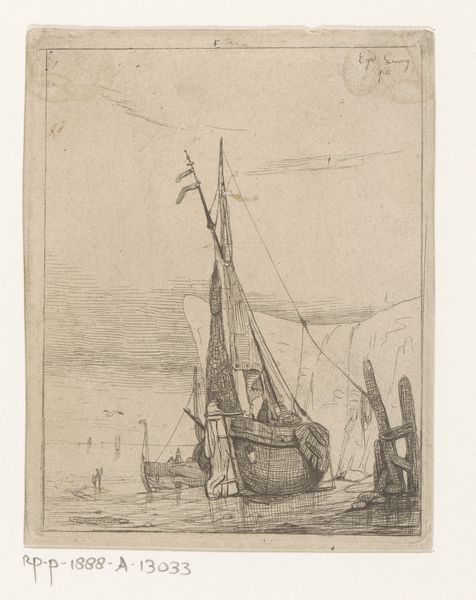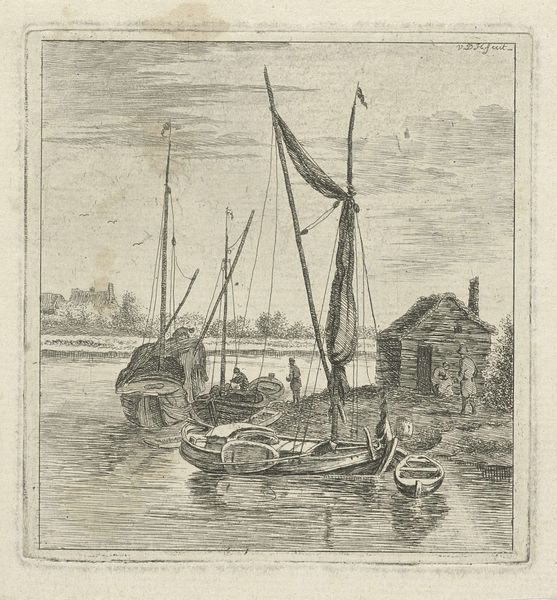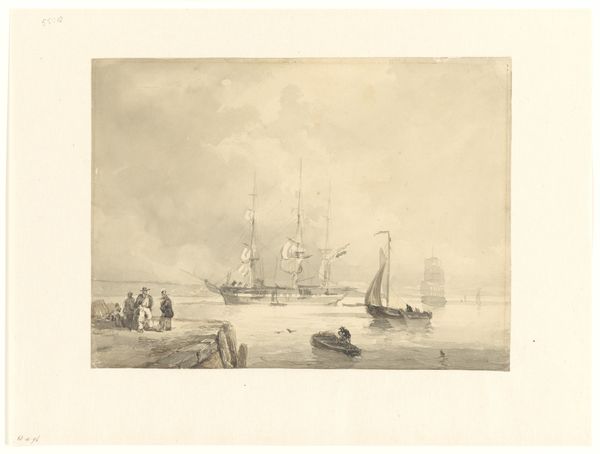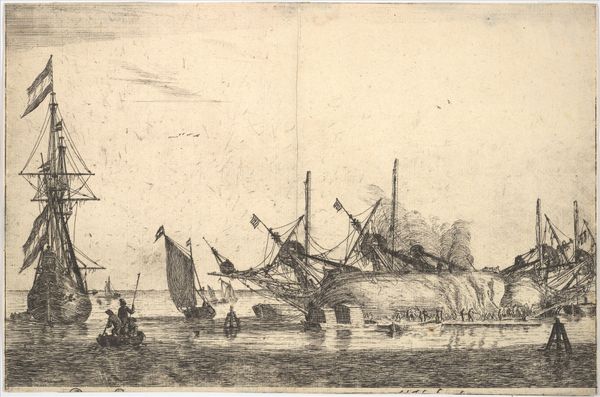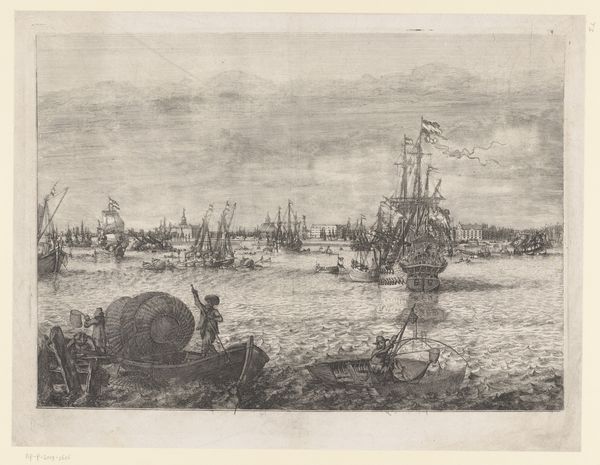
drawing, print
#
drawing
#
baroque
# print
#
landscape
#
cityscape
Dimensions: 10 1/4 x 10 1/8 in. (26 x 25.7 cm)
Copyright: Public Domain
Curator: This is Claude Lorrain’s, "A Port Scene," created sometime between 1604 and 1682. The etching and drypoint print offers a glimpse into maritime life during the Baroque era. What's your first reaction to it? Editor: It feels quite serene, almost melancholic. The tonal unity lends a dreamlike quality, despite the very clear subject matter. There's a definite mood evoked, I wonder how it reflects societal perceptions of labor. Curator: Let's consider the artistic choices and labor behind it. The printmaking process involves significant craftsmanship, from the initial sketch to the etching and printing itself. The paper used, the ink, and the press - all these elements speak to a deliberate and complex method of production. How would such art impact perceptions around wealth and value during this period? Editor: Good point. Seeing ships, harbors, and maritime trade reflected European power during colonization, of course, but this artistic interpretation almost glamorizes the situation. What might those involved in the labor think, compared to the likely patrons of this print? Curator: Precisely! And beyond its subject, how might the dissemination of these images alter artistic tastes or market for artworks during this time? The affordability of prints meant they reached a broader audience and brought prestige. Editor: Absolutely. The city reflected here in A Port Scene looks classical in structure; what values is the artist, and the art form of print, therefore supporting? A system that also depends on slavery to function? Curator: Certainly worth noting that intersection. The composition is constructed carefully—a balance between land, water, and sky, the lines and shading suggesting the tactile qualities of the materials used. Editor: Yes, this makes me also think about power, knowledge, and commerce as interconnected and visually reflected here, as an ideal that leaves some people out. Curator: It is also fascinating to note how this print blurs the lines between art and craft and prompts questions about consumption. Thank you for providing new perspectives and showing what’s often overlooked. Editor: Thank you! Understanding art within the larger contexts is crucial for deeper awareness of history.
Comments
No comments
Be the first to comment and join the conversation on the ultimate creative platform.

